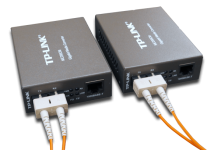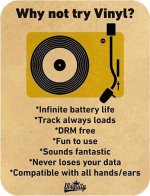- Thread Author
- #1
You are using an out of date browser. It may not display this or other websites correctly.
You should upgrade or use an alternative browser.
You should upgrade or use an alternative browser.
Electrically Isolate Your Networked Audio
- Thread starter joeinid
- Start date
CPP
Active member
I'm just listening to music, so much of this "computer associated stuff" moves me further away from just listening to music. USB isolators, enhancers, reclockers, USB re-generators and then you have the Balanced Isolation Transformers, and now Network clean -em-up devices. I tell ya, ya need a separate power block and a new rack just to connect and store this stuff .  eace:
eace:
ps: forgot about all the external power devices and special USB and Ethernet cables And yes I will most likely this gadget

ps: forgot about all the external power devices and special USB and Ethernet cables And yes I will most likely this gadget
Attachments
Dizzie
Well-known member
I'm about to try this. There is a lot of positive reviews over at Computer Audiophile.
Adam, Please report your findings.
Is it important to have the isolation near the music player or does it work as well on the upstream end? I like to keep my audio rack/system simple but would not mind putting the isolation in my office next to the router. That is where my Ethernet begins.
Vincent Kars
New member
- Joined
- Apr 18, 2015
- Messages
- 54
Part of the Ethernet standard is mandatory galvanic isolation.
Makes one wonder why using optics will help.
Let’s assume even although there is galvanic isolation, that if you plug the Ethernet cable in a switch it will pick up some noise.
The same of course will happen if you plug the cable in the port of the TP-Link
Why should all of a sudden a TP-link makes less noise than a switch?
I’m afraid the reported improvements are a typical case of listening with ones eyes.
Makes one wonder why using optics will help.
Let’s assume even although there is galvanic isolation, that if you plug the Ethernet cable in a switch it will pick up some noise.
The same of course will happen if you plug the cable in the port of the TP-Link
Why should all of a sudden a TP-link makes less noise than a switch?
I’m afraid the reported improvements are a typical case of listening with ones eyes.
Vincent Kars
New member
- Joined
- Apr 18, 2015
- Messages
- 54
Let split another one 
In the end the connection is an will be electrical.
Why should a port on the TP-Link causing less interference than one on the average switch?
In the end the connection is an will be electrical.
Why should a port on the TP-Link causing less interference than one on the average switch?
CPP
Active member
Well I'm waiting for Optical all the way from the Cable Box and all the way to the end point, the Speaker
Randy Myers
Well-known member
My music server is directly connected to the DAC (well, going through Recovery)... I do not stream from my NAS... I don't see a reason a device like this would help me. Oh, by the way I do have PS Audio Noise Harvesters connected in the AC circuit providing power to the system.
Is it important to have the isolation near the music player or does it work as well on the upstream end?
I've never tried this setup, but read quite a few related posts.
1. My understanding of this setup is that it should be done at the music player side (rather than the NAS, if only one segment is to be isolated).
2. A number of users have reported incompatibility with mismatched 100Mbps vs 1000Mbps ports between the converter and the player. They need to be matched otherwise it wouldn't pass network traffic at all - I don't know if this is true for some models of converters or all of them behave like this.
3. Converter users also report sonic differences with the changing of the power supply for the converters.
audio.bill
Active member
Regarding no. 3, the power supply for the converter at the receiving end (nearest the DAC) is the most critical as far as its impact on sound quality.I've never tried this setup, but read quite a few related posts.
1. My understanding of this setup is that it should be done at the music player side (rather than the NAS, if only one segment is to be isolated).
2. A number of users have reported incompatibility with mismatched 100Mbps vs 1000Mbps ports between the converter and the player. They need to be matched otherwise it wouldn't pass network traffic at all - I don't know if this is true for some models of converters or all of them behave like this.
3. Converter users also report sonic differences with the changing of the power supply for the converters.
harri
New member
- Joined
- Nov 30, 2015
- Messages
- 20
I have been using this since last july, and it is doing what it is supposed to do. But, you must use good ethernet cables ( I use AQ cinnamon) and change those toy switch-power supplies on the receiving end. ( IfI s not that expensive, and it seem to work ). I am streaming Tidal with MSB-universal player to MSB DAC V sig.


